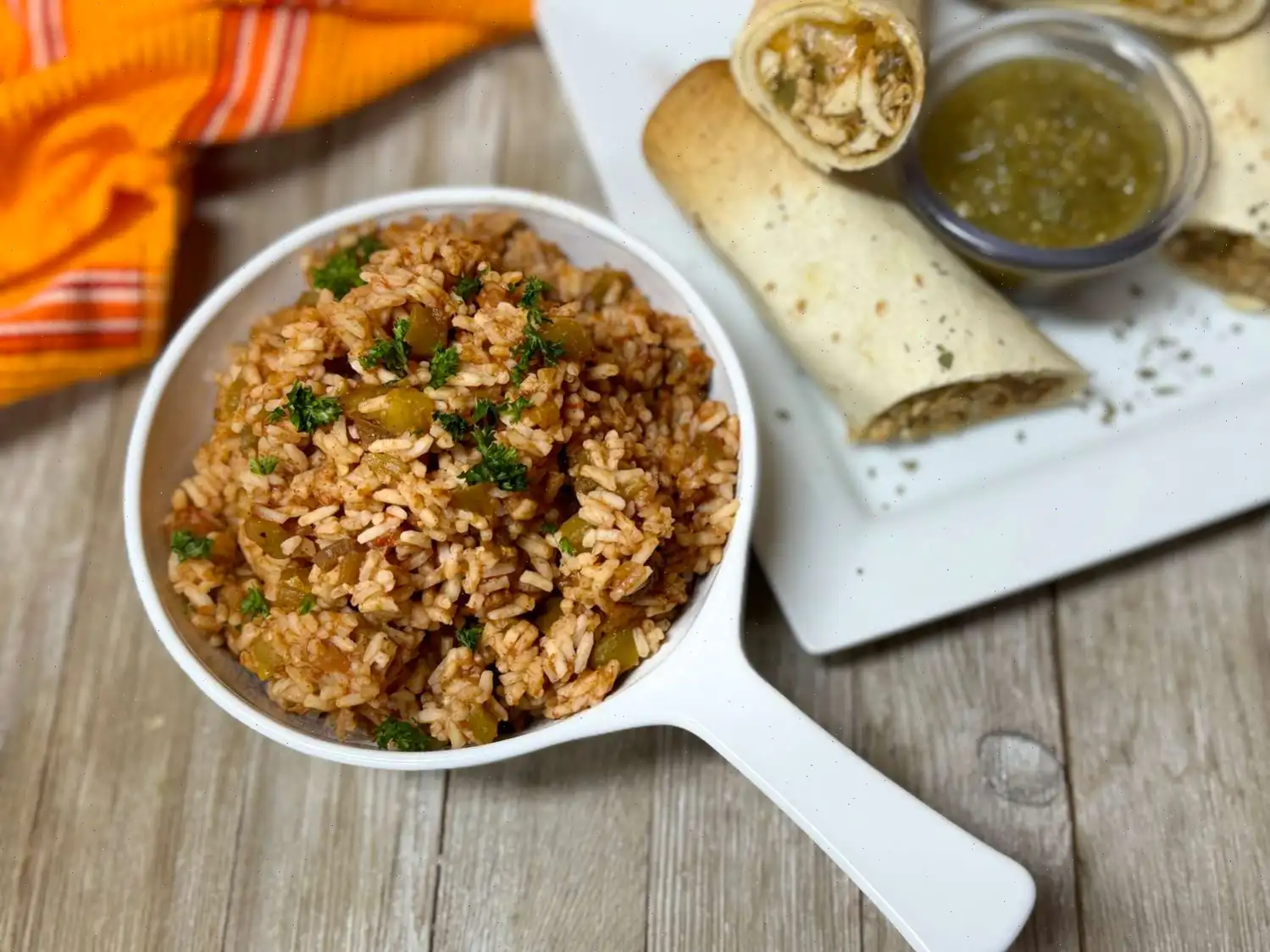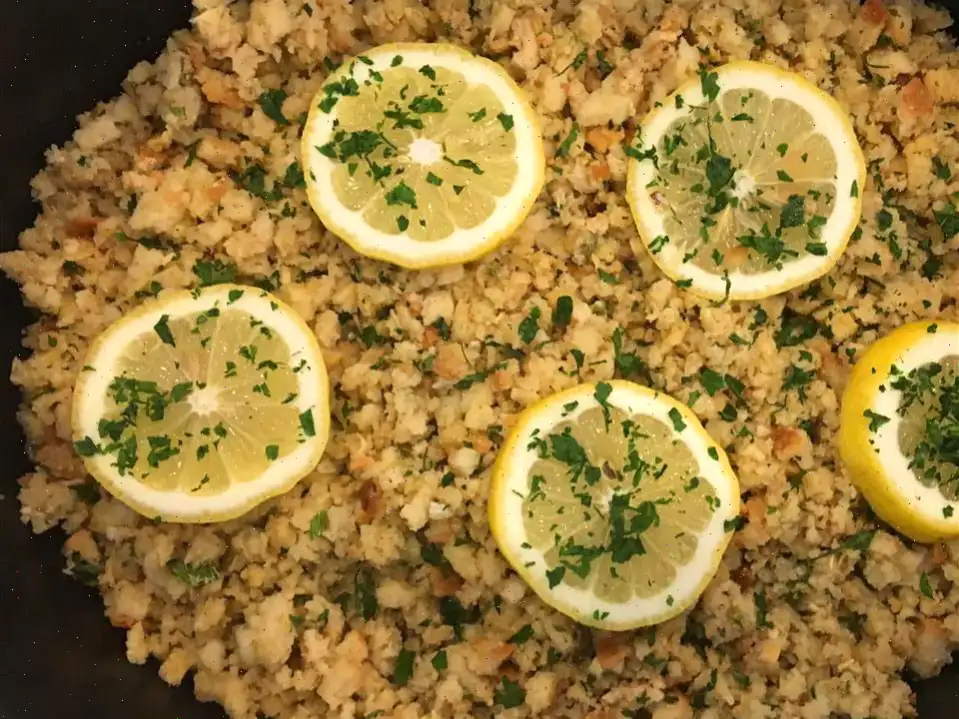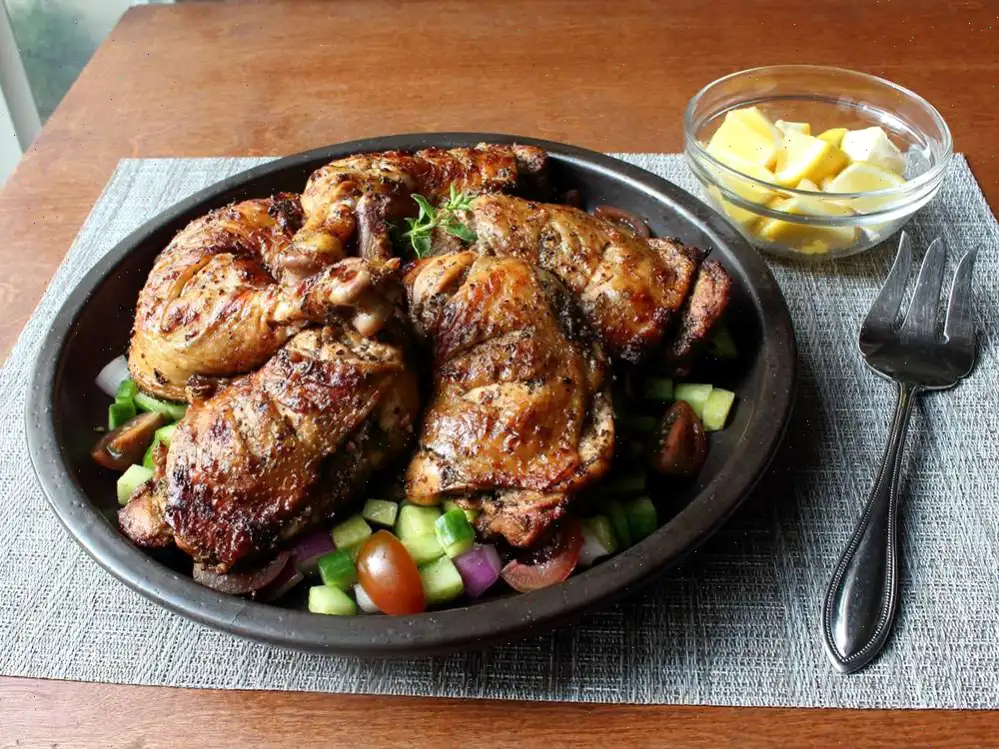
Microwave Mexican Rice Recipe
Ingredients
- 2 cups instant rice (such as Minute Rice)
- 2 cups water
- 1 cup picante sauce (such as Pace Picante Sauce)
- 1 (4 ounce) can chopped green chiles
- 1/2 (1 ounce) envelope taco seasoning
Directions
- In a large microwave-safe baking dish, combine the instant rice, water, picante sauce, chopped green chiles, and taco seasoning. Stir well to ensure all ingredients are evenly mixed.
- Place the dish in the microwave and cook uncovered on High for 8 minutes.
- Once cooked, remove the dish from the microwave and let it sit for 5 minutes to allow the rice to absorb the liquid.
- Fluff the rice with a fork, and serve hot.
Nutrition Facts (per serving)
| Nutrient | Amount | % Daily Value* |
|---|---|---|
| Calories | 71 | |
| Total Fat | 0g | 0% |
| Saturated Fat | 0g | 0% |
| Cholesterol | 0mg | 0% |
| Sodium | 383mg | 17% |
| Total Carbohydrate | 15g | 6% |
| Dietary Fiber | 2g | 6% |
| Total Sugars | 3g | |
| Protein | 1g | 3% |
| Vitamin C | 34mg | 38% |
| Calcium | 8mg | 1% |
| Iron | 1mg | 6% |
| Potassium | 70mg | 1% |
* Percent Daily Values are based on a 2,000 calorie diet. Your daily values may be higher or lower depending on your calorie needs.
The History of Mexican Rice
Mexican rice, also known as "Spanish rice" in some regions, has its roots in the fusion of indigenous Mesoamerican ingredients with Spanish culinary traditions introduced during the colonial period. Rice itself was brought to Mexico by Spanish explorers in the 16th century, and over time, it merged with native ingredients like tomatoes, chili peppers, and corn. The dish evolved as a staple side for everyday meals, prized for its simplicity, versatility, and ability to complement richly flavored proteins and sauces.
Regional Variations
While Mexican rice is popular throughout Mexico, regional differences highlight local tastes. In northern Mexico, it is often cooked with a heavier tomato base and slightly spicier seasonings, whereas central regions may favor milder, more subtly seasoned rice with added vegetables like peas and carrots. Coastal areas sometimes include seafood or seafood stock for a unique twist, reflecting the abundance of fresh local ingredients. The microwave version simplifies the preparation, maintaining the essential flavors while adapting to modern kitchen conveniences.
How It Differs from Similar Dishes
Mexican rice is often compared to Spanish rice or Latin American rice dishes, but key distinctions exist. Unlike Spanish paella, Mexican rice typically lacks saffron and is usually cooked separately from proteins. It is also less oily and more lightly seasoned than many Caribbean or Central American rice dishes, focusing on a balance of tomato, chili, and mild spices rather than bold or complex flavor blends. The use of picante sauce and taco seasoning in microwave recipes provides a modern shortcut without compromising the characteristic taste.
Typical Occasions and Serving Styles
Mexican rice is a ubiquitous side dish, commonly served with tacos, enchiladas, burritos, or grilled meats. In home kitchens, it complements both everyday family meals and festive gatherings. It can also be part of a larger buffet at Mexican restaurants, offering a colorful and flavorful addition that pairs well with beans, salsas, and guacamole. Microwave versions are particularly convenient for quick lunches, weeknight dinners, or meal prepping in advance.
Interesting Facts
One intriguing aspect of Mexican rice is its adaptability: it can be easily customized with vegetables, meats, or different levels of spice. Traditionally, the rice is lightly toasted in oil before simmering to achieve a nutty flavor and separate grainsa step sometimes skipped in microwave recipes for speed. Additionally, Mexican rice is often dyed naturally by tomato or achiote, resulting in the iconic orange-red color that distinguishes it from plain steamed rice. Despite its simplicity, this dish has become a cultural symbol of Mexican cuisine, celebrated both domestically and internationally.








